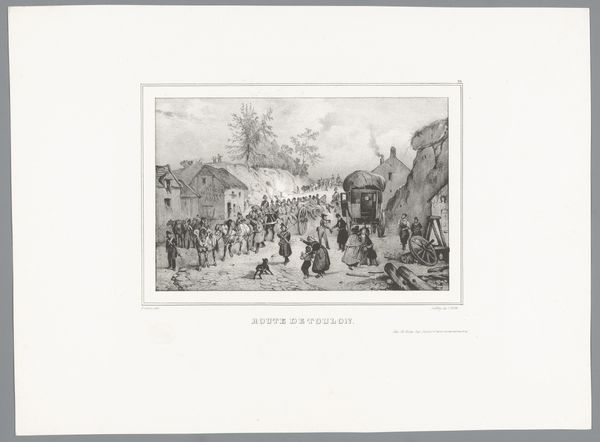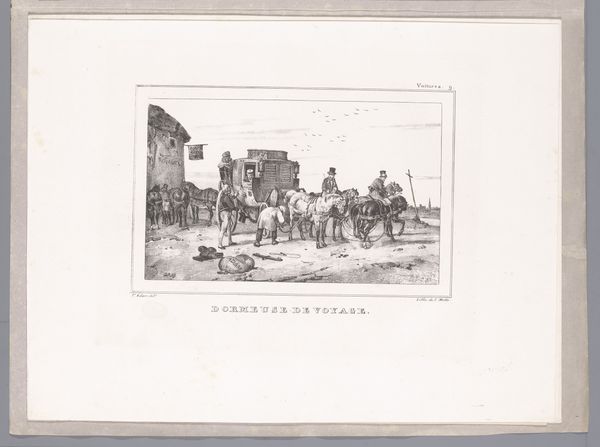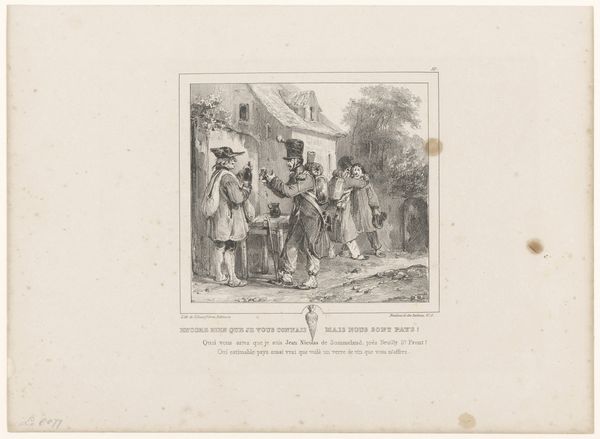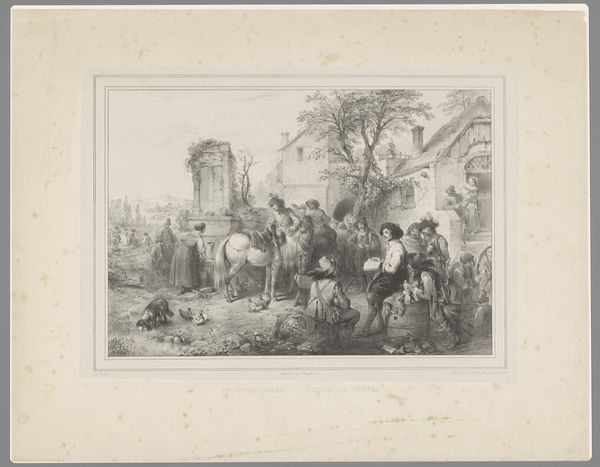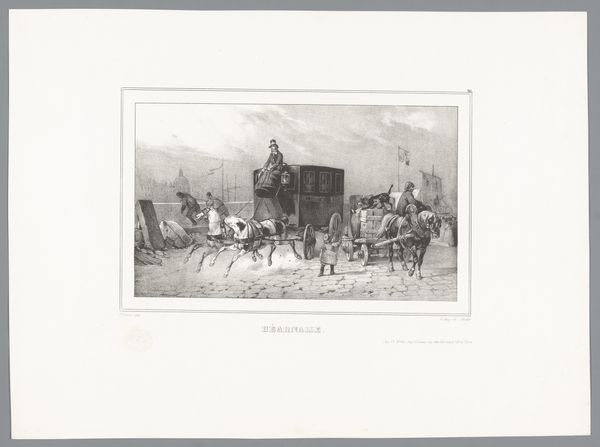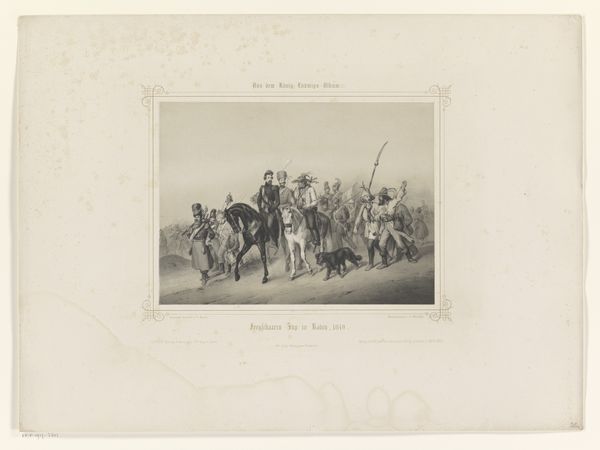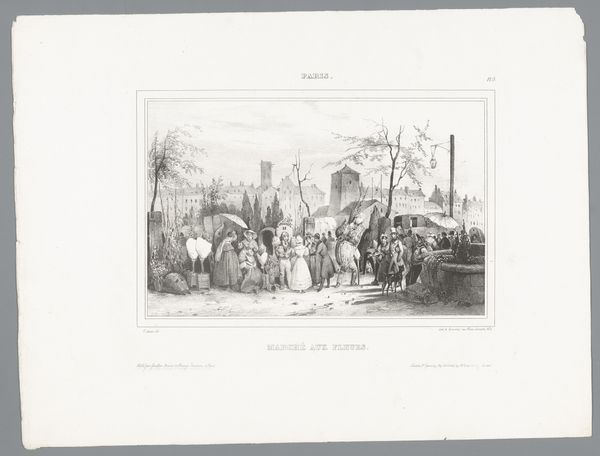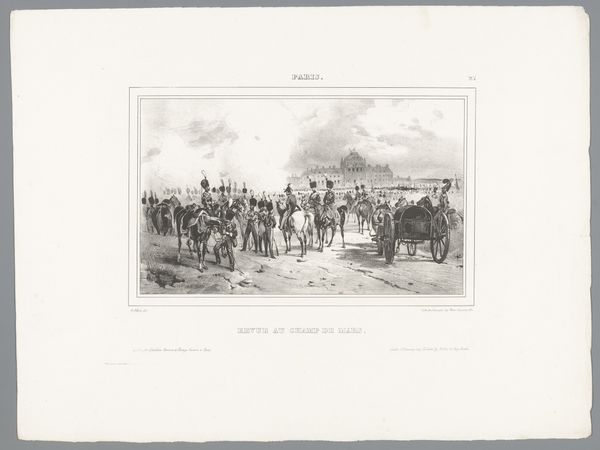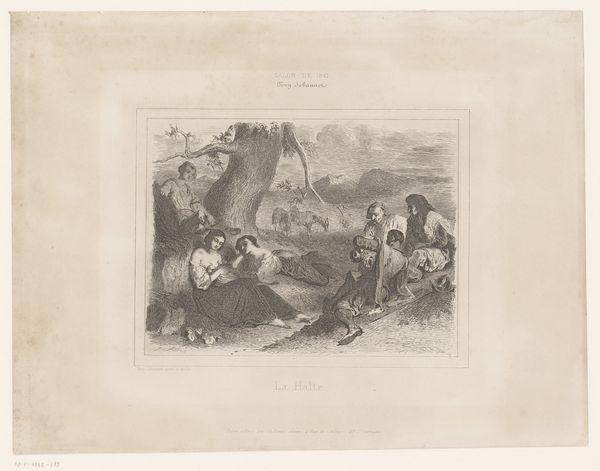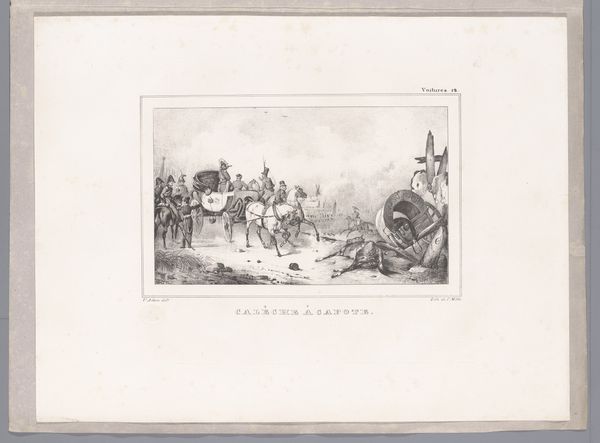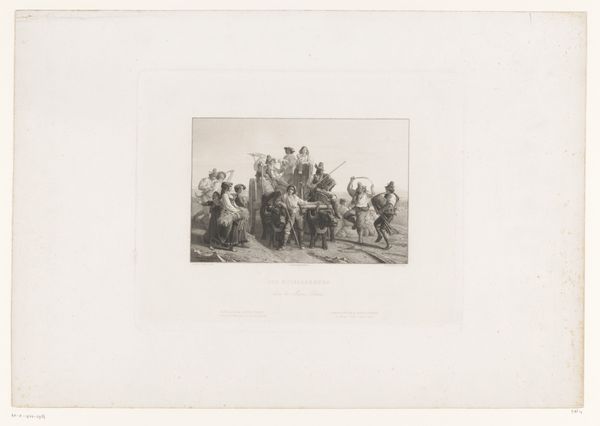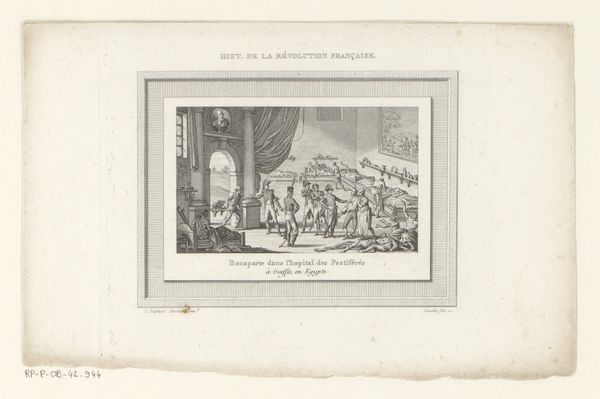
Dimensions: height 440 mm, width 590 mm
Copyright: Rijks Museum: Open Domain
Editor: This is "Transport van gevangenen in Piemonte," or "Transport of Prisoners in Piedmont," an engraving by Franz Adam from the 1850s. There's a stillness in the image that’s quite striking, considering the implied movement and the heavy subject matter. It feels more like a staged scene than a spontaneous moment. What do you make of it? Curator: It’s like a paused film reel, isn’t it? Adam gives us a snapshot of a moment heavy with untold stories, but you almost have to lean into it. To really understand the stillness you sensed, I suggest reading the work with an eye for Romanticism—an attempt to tame and compose chaotic historical events. Imagine the noises, the smells! Can you picture Adam painstakingly etching each figure? This wasn’t a casual Instagram post, but a labor-intensive interpretation. I wonder, what narrative threads do you catch hold of? Editor: I'm struck by the way the prisoners are somewhat passively posed in the engraving—almost like they're resting, or resigned. They seem dwarfed by their captors and the surrounding landscape. I see figures sprawled, lying down—completely exposed. Curator: Exactly! Note how Adam juxtaposes human vulnerability against a carefully crafted scene? To your point—the choice of landscape is intentional; perhaps he saw the landscape itself as another kind of prison, a vast, indifferent witness. The lack of dramatic expression adds another layer: were the prisoners figures in some larger allegory? Was Adam critiquing or commenting, or simply trying to record the "reality" of such a sight? How might your own experiences shape your view of this print, decades later? Editor: I guess I expected a historical depiction of prisoners to be a bit more... explicit. Maybe that was my projection, assuming misery on display. This gives me a lot to think about. I realize that, sometimes, what's left out says just as much. Curator: Isn't it wonderful when a quiet piece speaks volumes? "Transport of Prisoners" isn't just a snapshot; it is an echo that reverberates with our own questions and perceptions. That's where the true art lives!
Comments
No comments
Be the first to comment and join the conversation on the ultimate creative platform.
